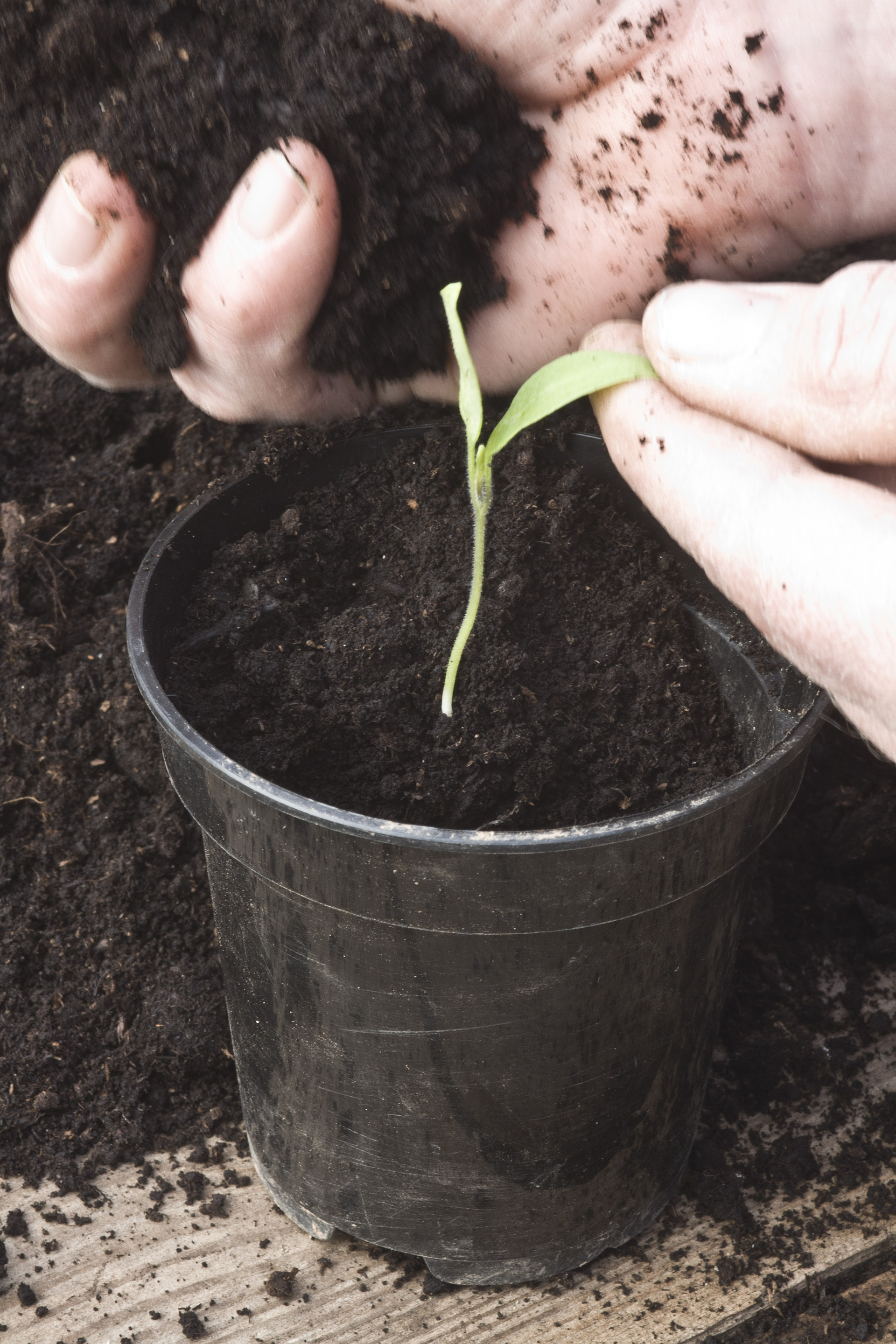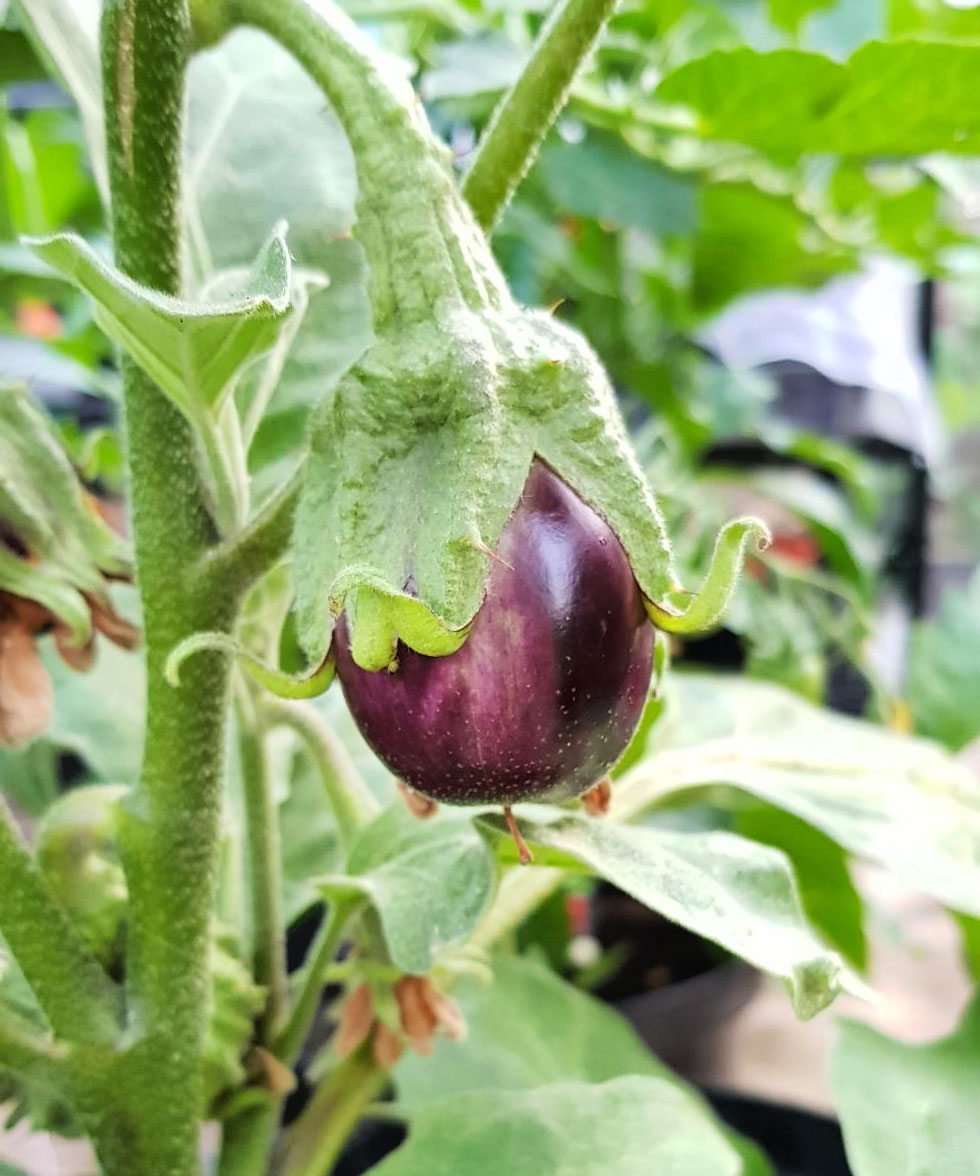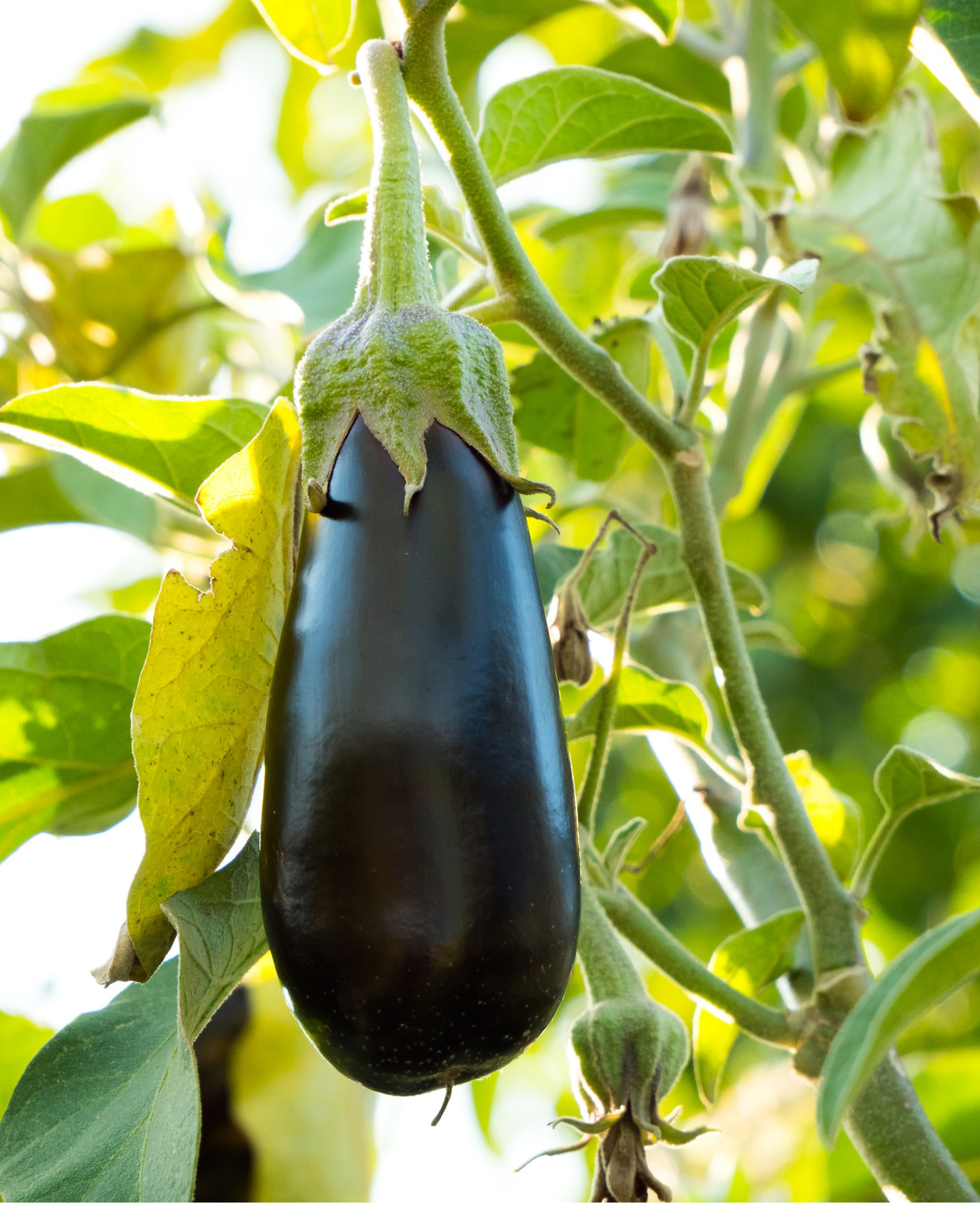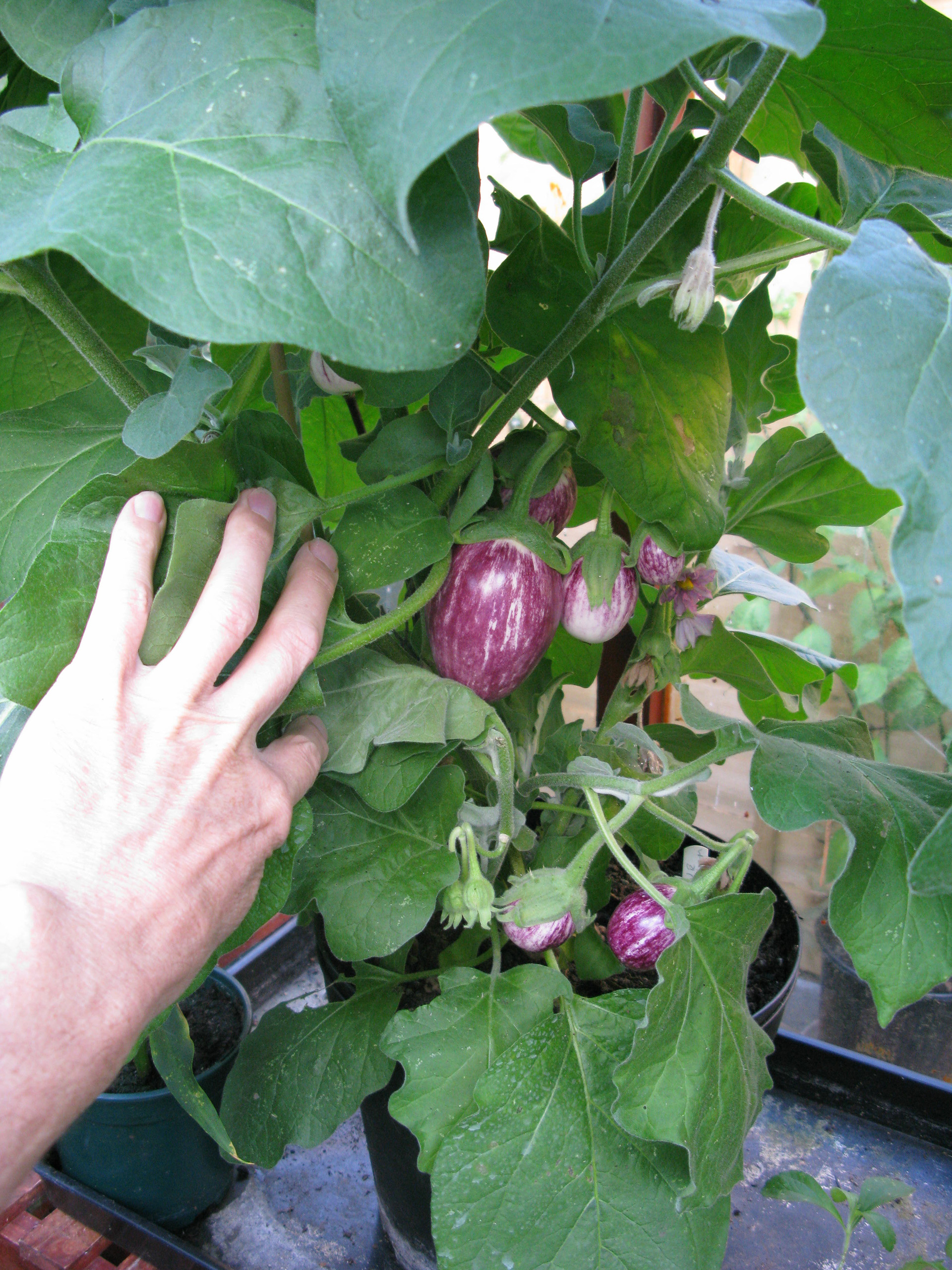How to grow eggplant – when and where to plant this tasty crop
Find out how to grow eggplant to enjoy the delicious purple fruits as part of your homegrown crops


Learn how to grow eggplant and your tastebuds will thank you for it. Eggplants are sun-loving plants that are the very taste of summer.
If you enjoy constant warm, sunny conditions where you live, they are an easy and rewarding plant to grow, either as part of your vegetable garden ideas.
Eggplants, also knowns as brinjals, have been grown in Southeast Asia for thousands of years. Although considered a vegetable, they are actually a fruit and part of the nightshade family.
Packed with vitamins B1 and B6, magnesium and fiber, eggplants are a seasonal vegetable every gardener should have growing on their veg patch for adding to a tasty moussaka or simply grilled over an open flame.
How to grow eggplant – where and when to grow them

In South Asia, eggplants are regarded as a perennial plant, but we grow these sun-loving vegetables as annuals.
Similar to their nightshade peers, peppers and tomatoes, they develop their fruit on their branches. If you are wondering how to grow eggplant successfully, they need the following conditions:
- They require at least six to eight hours of full sun daily
- They like to grow in rich, moisture-retaining soil
- They prefer temperatures between 70°F and 85°F (21 to 29°C)
- They are best suited to USDA hardiness zones 9-12
If you try growing eggplants in cooler conditions, they can sulk and be reluctant to put on growth. They are therefore a good choice to include when planning a greenhouse where they will enjoy warmer conditions, or if you grow them as part of your vegetable garden container ideas, then you can ensure they are placed in the sunniest and warmest spots, protected from the elements.
Design expertise in your inbox – from inspiring decorating ideas and beautiful celebrity homes to practical gardening advice and shopping round-ups.

Although we think eggplants as a black swollen fruit, they also come in white, green, purple, variegated, long, slim and small. Because they can look so attractive, they can also be used as ornamentals.
'I absolutely love growing eggplant. Incredibly versatile for so many different recipes, I love all of the different colors and shapes, how some are seriously spiky and, of course, the delicious taste,' says Steff Hafferty of No Dig Garden, garden author and food writer, who is also a leading authority on no dig gardening.
How to grow eggplant from seed

As they require a long growing season, of up to six months, it is best to start off eggplants six to eight weeks prior to the last spring frost date in your area. Add this in to your calendar for when to plant vegetables.
Sow the eggplant seed indoors, using a rich compost mix, sowing two seeds per small pot, and planting half an inch deep. The weaker seedlings can be removed at a later date.
Ensure the soil is always moist and warm, therefore keep pots somewhere warm and sunny, such as on a sunny windowsill or in a heated greenhouse. Germination should occur in 14 to 21 days. Once roots appear through the bottom of the pot, pot on into a larger pot to grow on.
When to plant eggplants outside

Young eggplants can go outside into their final growing positions once all risk of frost has passed, and night-time temperatures are no lower than 60°F to 65°F (15-18 °C).
Prior to planting, ensure the soil has plenty of organic matter, such as homemade compost worked in. If temperatures are still a little low, consider warming the soil for a week or two before planting, by placing covers over the growing area.
'Eggplants thrive in warm weather, so late spring or summer are excellent times to plant the plants,' advises California Gardening.
How to plant eggplant outside
Plant eggplant seedlings 24 to 30in (60-75cm) apart, in rows 36in (90cm) apart. Water in well and apply a mulch to the plant base to help retain moisture.
As eggplants can topple over due to the weight of their growing fruit, a support structure, cane or vegetable garden trellis idea should be put in place at the time of planting.
Growing eggplants may initially require extra warmth and protection until they become established, so use row covers. Remember, however, to remove the covers during the day to allow pollinators to reach their emerging flowers. Once fruit appears, begin a regular plant feed.
How to grow eggplant in containers

If growing space is limited, eggplants can be successfully grown in containers.
Keep it to one plant per five-gallon – at least – pot. Try using a dark-colored container as this will absorb more heat. Keep soil moist, ensure plants are supported, and feed plants regularly as nutrients will quickly become exhausted in a container.
There are small varieties available to grow that are ideal for pots and containers.
If daytime temperatures in the area that you live are not very high, consider growing eggplants in containers and keep them in a greenhouse throughout the season.
When to harvest eggplants
Luckily, learning when to pick eggplants is easier than growing them. Eggplants are generally harvested from mid-summer onwards. Depending on the variety, most will let you know when they are ready to harvest as their skins take on a glossy, unwrinkled finish.
If you gently push the skin, the indent should remain. Once their skins become dull, they are overripe and can taste bitter.
Using a sharp knife, cut away the fruit from the plant, leaving about an inch of stem on the eggplant. Although eggplants can be stored for up to a week in the refrigerator, they are best eaten straight away.

Recommended varieties of eggplant to grow
Some popular varieties of eggplant to try growing include:
- Black Beauty – a traditional looking black eggplant that can grow four to six fruits per plant
- Little Fingers – good for containers with black/purple finger-sized fruit
- Easter Egg – tends to be white and is grown as an ornamental, not to be eaten
Originally, eggplants only came in small, white varieties and looked like hanging eggs, hence the name. But whatever variety you opt for, eggplants are a welcome addition to any productive garden.
How long does it take to grow an eggplant?
Patience is a prerequisite for how to grow eggplant successfully, as they take a long time to grow – from seed to harvest can be from 100 to 120 days.
The key to growing eggplants is ensuring they have plenty of sun and heat. These are tropical plants, so it is worth consider growing them in a greenhouse where you can help create the ideal growing conditions.
Are eggplants easy to grow?
Providing they get the required warmth and sunlight, eggplants are a very easy vegetable to grow. Some growers do prune eggplants to improve their yield, but it is not an essential task. Unfortunately, there are certain pests and diseases to watch out for. Try companion planting eggplants beside beneficial crops or flowers to deter pests
Flea beetle – can create small holes in the eggplant, both weakening it and hampering fruit growth. Try letting plants grow on a bit bigger before planting on, so they can happily shrug off a possible attack.
Aphids – either pick them off by hand or spray the plant with mild, soapy water to deter the pests. Permaculture gardening techniques, without the use of chemicals to deter pests, is advisable.
Verticillium wilt – is a soil-borne fungal disease that can cause dieback. Try growing disease-resistant varieties and rotate crops seasonally.

Ade Sellars is a gardener, presenter and gardening writer with a passion for growing his own food in his kitchen garden. He grows his own organic fruit and veg in his kitchen garden and now runs his own gardening business. This year he will also be giving talks at gardens around the country.